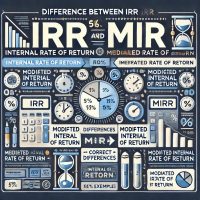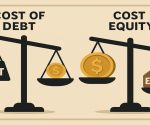The primary differences are between tangible and intangible in terms of their existence, valuation, and usage in business operations. Tangible assets are physical assets as they can be touched or seen-they include machinery on site or buildings, whereas intangible assets are not physical, including intellectual property, brand value, and goodwill, amongst others. Due to their pivotal positions in a company’s financial stability and growth, they hold significant differences in characteristics, value, and usage.
What is Tangible Assets?
Tangible assets are real and tangible assets owned by a business that can be touched, seen, and measured. These assets help in running the daily activities of business operations where revenue is thereby generated. Its value is the definite monetary value that can depreciate with time.
Key Features of Tangible Assets
- Physical Presence: Tangible assets are physical and therefore occupied space, for example, land, machines, or automobiles.
- Depreciable: Their value declines with time due to wear and tear, obsolescence, or usage.
- Easily Valued: Their monetary value is estimable by using market rates or account records.
- Liquid in Nature: Tangible assets are generally easy to be sold or liquidated into money.
Types of Tangible Assets
- Fixed Tangible Assets: Long-term assets used in operations, such as buildings, machinery, and furniture.
- Current Tangible Assets: Short-term assets like inventory or raw materials that are consumed within a business cycle.
Importance of Tangible Assets
- Revenue Generation: The production and running of businesses all require tangible assets.
- Collateral for Loans: The companies can pledge tangible assets as collateral to seek loans.
- Easily Transferable: These assets can be sold to manage cash flow or meet financial obligations.
What is Intangible Assets?
Intangible assets are those assets that represent a company’s intellectual property, reputation, or legal rights, and are intangible, meaning they can’t be felt, measured directly, or touched. Nevertheless, such an asset often contributes significantly to the value of a company.
Key Features of Intangible Assets
- Non-Physical Nature: Intangible assets are non-physical, presenting as rights or value-in-form such as patents or trademarks.
- Amortizable: Their cost is spread over their useful life by amortization.
- Difficult to Value: The value of intangible assets quite often depends on market perception, brand strength, or legal rights.
- Indefinite or Finite Life: Some intangible assets, such as goodwill, are of indefinite life, while others, like patents, are of finite life.
Types of Intangible Assets
- Legal Intangible Assets: Assets like patents, copyrights, and trademarks that provide exclusive legal rights.
- Competitive Intangible Assets: Brand value, goodwill, and customer relationships that offer a competitive edge.
Importance of Intangible Assets
- Market Differentiation: Intangible assets like branding or patents differentiate a company from competitors.
- Value Creation: These assets often account for a significant portion of a company’s overall value.
- Enhanced Profitability: Intangible assets contribute to long-term growth and profitability.
Differences Between Tangible Assets & Intangible Assets
Tangible and intangible assets are essential for a company’s financial health, but they differ significantly in their characteristics and role. Below are six detailed differences:
Physical Presence
- Tangible Assets: These types of assets are physical. They can be seen, touched, or measured. Examples of tangible assets include machinery and vehicles or land. Example: A car that a company has for business purposes is a tangible asset.
- Intangible Assets: Intangible assets have no physical form; they are as of mind. These exist as intellectual property or rights. Examples include trademarks, copyrights, and goodwill. Example: Coca-Cola’s trademark and brand value are intangible assets.
Valuation
- Tangible Assets: The value of tangible assets is determined by simple market prices or accounting standards. Example: The value of a company’s office building can be ascertained by comparative market prices.
- Intangible Assets: Intangible asset value is greatly complex and based on market perception, potential earnings, or legal rights. For instance, patent value will depend on the amount of revenue earned and legal protection.
Depreciation vs. Amortization
- Intangible Assets: Intangibles depreciate over time because of wear and tear, and their cost is reduced through depreciation. Example: The company depreciates its machinery over ten years since it depreciates in value.
- Intangible Assets: Intangible assets are amortized over their useful life. This way, the cost is spread evenly across their lifespan. Example: A software company spreads the cost of a license over five years.
Liquidity
- Tangible Assets: Tangible assets are generally more liquid, as they can be sold or converted into cash more easily. Example: A business can sell its inventory or equipment to raise funds during financial difficulties.
- Intangible Assets: Intangible assets are less liquid, as their value is subjective and depends on market conditions. Example: Selling a brand’s goodwill or intellectual property often involves complex negotiations.
Role in Business Operations
- Tangible Assets: These are the ones directly used in operations like production or warehousing. Example: The ovens and delivery trucks of a bakery are tangible assets without which they cannot be operated.
- Intangible Assets: These also indirectly contribute to success in businesses by boosting reputation or competitive advantage. Example: A trademark of a company ensures recognition of the brand. This may boost sales.
Classification on Balance Sheet
- Tangible Assets: All such tangible assets are recorded under fixed or current assets in the balance sheet based on their nature.
- Intangible Assets: Intangible assets are classed as non-current assets since they have a long-term life value.
| Aspect | Tangible Assets | Intangible Assets |
| Physical Presence | Physical, can be seen, touched, or measured. | Non-physical exists as intellectual property or rights. |
| Examples | Machinery, vehicles, land. | Trademarks, copyrights, goodwill. |
| Valuation | Based on market prices or accounting standards. | Complex, depends on market perception and potential earnings. |
| Depreciation | Subject to depreciation due to wear and tear. | Amortized over their useful life. |
| Liquidity | More liquid; easier to sell or convert to cash. | Less liquid; value is subjective and market-dependent. |
| Role in Operations | Directly involved in business operations like production. | Indirectly boosts reputation or competitive advantage. |
| Balance Sheet | Recorded as fixed or current assets. | Classified as non-current assets. |
Conclusion
The tangibility of the assets makes a big difference in the existence, valuation, and contribution to the operation of the business. Tangible assets have a physical existence, depreciate over time, and usually have direct involvement in operations. Intangible assets have no physical basis, and are amortizable, but are highly critical when it comes to building long-term value or competition. Both assets make up essential positions for a company’s financial success and strategic growth, thus making it very important that businesses properly manage and leverage these assets.
Tangible Assets vs Intangible Assets FAQs
What are tangible assets?
Tangible assets are physical assets that include land, buildings, and machinery and have the ability to be viewed, touched, and used in running a business.
What are intangible assets?
Intangible assets, on the other hand, represent non-physical assets, such as patents, copyrights, brand value, etc. They contribute to a company’s long-term success.
How are the tangible and intangible assets valued?
Tangible assets, in general, are valued based on market rates or accounting standards, and intangible assets are valued by very complex methods, including future earnings estimation.
What is the main variation of depreciation or amortization?
The tangible assets get depreciated over time, but intangible assets are amortized according to their useful life.
Why are intangible assets important?
Brand value as well as intellectual property are intangible assets that improve market differentiation and lead to long-term profitability.


